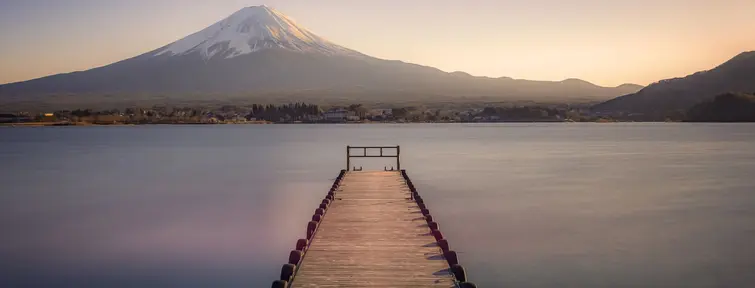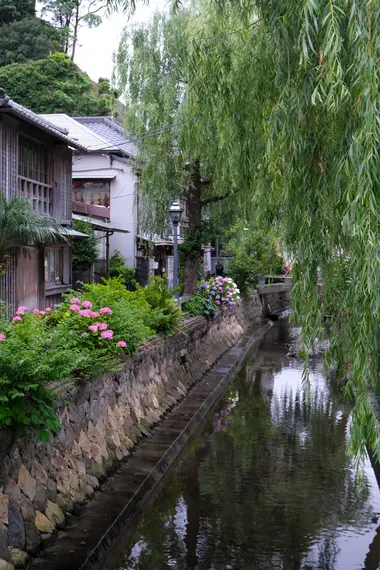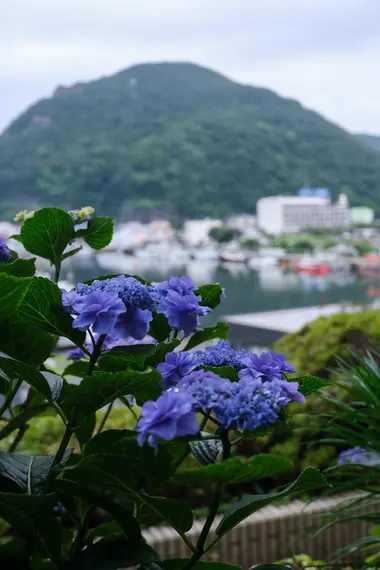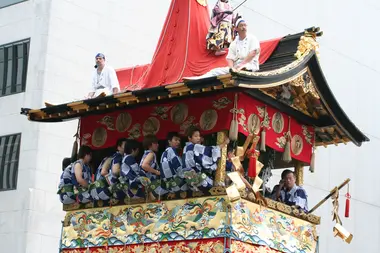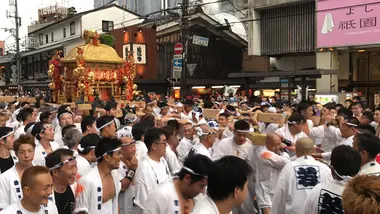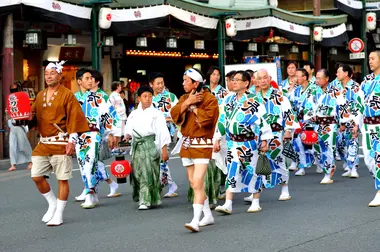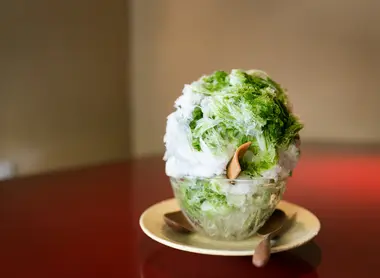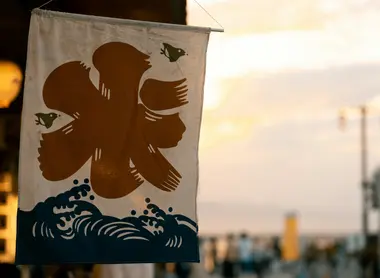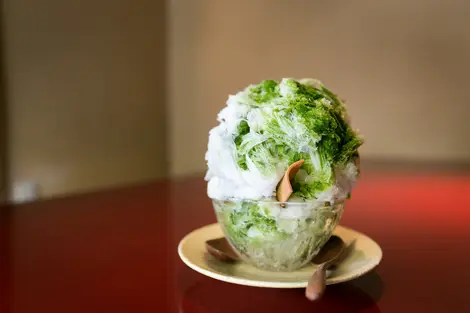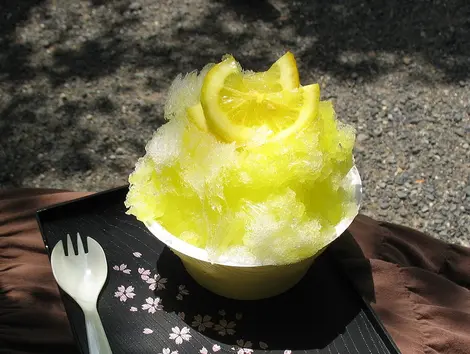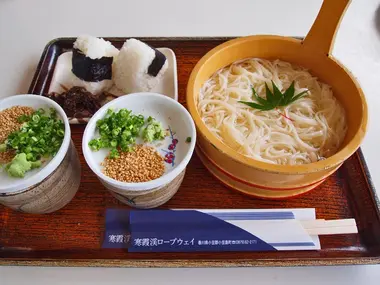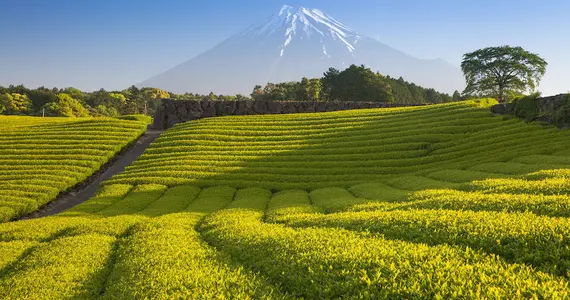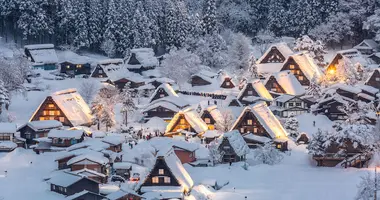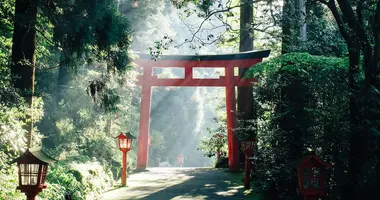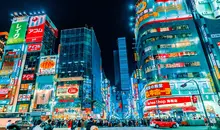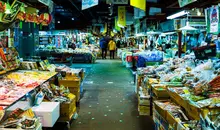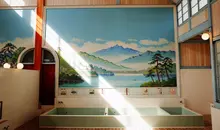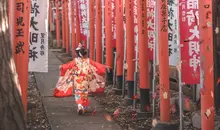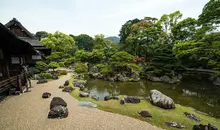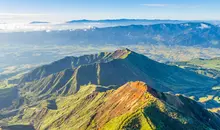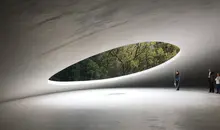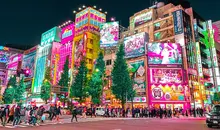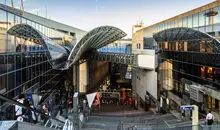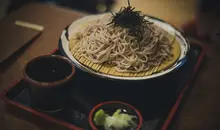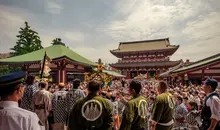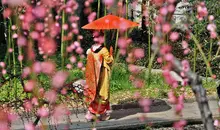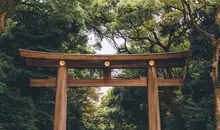Summer travel in Japan
- Published on : 18/06/2024
- by : Marion Egault
- Youtube
Summer in Japan is a season of simple beauty and deep cultural significance. It embodies the time of year when the Japanese celebrate both the summer heat and their cultural heritage through matsuri, traditional festivals.
Donning light, cotton kimonos called yukata, wooden geta slippers, and beautiful uchiwa fans, the people in Japan gather in the streets at dusk to share a festive moment. It's during the summer months that festivals are most numerous and spectacular. However, summers in Japan are also particularly hot and humid, with temperatures regularly climbing above 30°C (86°F). So it's best to get away from the scorching asphalt of the cities and enjoy the fresh air of the countryside. From the northern mountains of Hokkaido to the rich beaches of the south, all the way to Okinawa, there's always a place to enjoy the season, ice cream in hand!
Read more: Yukata and jimbei
Summer between mountains and seaside resorts
Less than 2 hours away by train, the Izu Peninsula and the 5 Lakes region offer spectacular scenery at the foot of Mount Fuji. Take a deep dive and look into these popular summer destinations!
Izu Peninsula
Renowned for its picturesque sandy beaches, picturesque resorts and surfing spots, the Izu Peninsula is one of the most popular places for Japanese people, especially Tokyoites. Shimoda, a charming coastal town in the south of the peninsula, is probably the largest seaside resort. A unique blend of immense white-sand beaches, historic lanes and lively neighborhoods, vacationers love to soak up the summer sun and go surfing. Shimoda was also very popular with Emperor Meiji himself, who had a resort built here, the Suzaki villa, which is still in use today.
Not far away, in Kawazu, tourists come mainly for the hot springs and the lovely views they offer over the river or the sea.
Heading inland, you can continue on to the Seven Cascades. Located in the center of the peninsula, the charming onsen village of Shuzenji offers a timeless escape. Its temple in the heart of the town and its picturesque architecture immerse visitors in an apparent tranquility. Stroll through Shuzenji's gardens and bamboo forest, visit historic temples, and enjoy onsens and local crafts. In summer, the Shuzenji fireworks display is a popular event!
To get away from the hustle and bustle of the summer season, travelers can cross the peninsula to its western coast. This is less frequented by tourists and therefore more peaceful. The west coast also offers the best view of Mount Fuji.
The panoramic Nishiizu Skyline road offers spectacular views of the sea and Mount Fuji, as does Cape Toda, a popular spot for photographers.
Last but not least, the best way to admire this volcanic coastline is to take the short cruise from Dogashima, which also leads to a little-known sea cave with an enchanting light. You can also visit Toi's former gold mines, where you'll find the world's largest gold ingot, weighing in at 250 kilos!
- Read more: The Izu Craile Train
Around Mount Fuji
Situated between Mount Fuji and the Izu Peninsula, the 5 Lakes Region offers a charming array of natural sites. Featuring one of the finest views of Mount Fuji in the country, the lake-surrounded towns of Hakone, Fujigoko, and Kawaguchiko are must-sees for walkers. With bike paths all around the lakes, hiking trails overlooking the valley, or boats floating peacefully, there are a myriad of ways to enjoy the region and admire Mount Fuji!
Also read: Views of Mount Fuji: 5 places to see it best
The charming, mountainous town of Hakone is renowned for its onsen and a wide variety of art museums, including the Chokoku no Mori open-air museum, as well as its torii at the foot of the water of and pirate ship cruises on Lake Ashi! Visitors can take the cable car up to the Owakudani volcanic site for a breathtaking view of Mt. In Fujigoko, you can admire the magnificent fields of brightly colored flowers that carpet the foot of Fujisan. Last but not least, Kawaguchiko is probably the most popular observation point on Mount Fuji. Under the summer sky, forest paths and historic walkways bear witness to a harmony between art and nature. Kawaguchiko is also the starting point for climbing Mount Fuji via the 5th station. Climbing Fujisan is a very popular activity in summer.
- Also read: The best walks in Hakone
The official hiking trails are only open for two months of the year for the general public, from July to August, so it's often a case of climbing in single file. Mount Fuji fascinates both at the foot and at the summit, where the enchanting panorama unfolds with every step.
Want to find out more about climbing Mount Fuji?
Japan Experience has done it! Follow us on our adventure to Japan's highest peak, with all the advice you need!
- Read more: Climbing Mount Fuji
Climb Mount Fuji!
Matsuri and Hanabi, the festivals that define summer
Matsuri, the traditional festivals of Japan
On the menu for summer matsuri: religious processions, fireworks, and yukata (light kimono typically made from cotton). Traditional festivals are very important moments for the Japanese and provide a good opportunity to get together with family and friends. Matsuri often have religious origins and themes but are also simply an opportunity to have fun, watch fireworks or sample food from the many stalls. Summer and its climate are, of course, very conducive to these outdoor festivities. Here are some of the archipelago's most famous matsuri and traditional summer festivals!
- Find out more: Discover Japanese events and festivals
The Gion Matsuri is a major event in Kyoto. This ancient celebration takes place throughout July, but the most important procession is held on July 17 in the city center. The 33 huge Yamahoko floats are paraded, and the Japanese joyfully take to the streets, dressed in yukatas and geta (wooden sandals). A few days later in Osaka, the Tenjin Matsuri is held near the Tenman-gû shrine. It's a boat festival: 3,000 people in Edo period costumes (1603-1868) take to the water on boats at nightfall, and a huge fireworks display takes place. A true immersion in Japanese culture!
In August, we celebrate the stars with the Tanabata Matsuri. In Sendai, the festival is especially famous, with giant decorations floating all over town. Dances, musical performances and fireworks are also on the program!
- Discover also: Summer music festivals in Japan
Hanabi: Fireworks in Japan
Summer in Japan wouldn't be complete without its famous firework displays, known as hanabi taikai in Japanese. With hundreds of festivals from north to south, summer fireworks are a veritable institution in Japan. Meaning "flowers of fire" (hanabi), they explode in the sky and are reflected in the night waters, watched by a compact crowd. These fireworks are renowned for their colorful and impressive displays. Every year, the fireworks engineers take up the challenge of dazzling spectators even more.
Combined with the mildness of the season and the relaxed atmosphere that accompanies them, hanabi are an unmissable ritual of the Japanese summer. Spectators love to don their yukata, as they do during the matsuri, and stroll through the streets filled with food stalls and games for young and old alike.
The Sumidagawa Hanabi Taikai is a fireworks display on the Sumida River in the heart of Tokyo and and is one of the oldest and most famous. The fireworks are fired from boats near the Asakusa district and can be admired from the riverbanks or surrounding parks! In Hiroshima, on the shores of the island of Miyajima, the fireworks display is one of the most important events of the year. With the famous red torii as a backdrop, you can enjoy an exceptional evening in an extraordinary setting. Finally, if you want to leave with stars in your eyes, head north to Akita for the Omagari no Hanabi. In fact, it's a national competition for the best pyrotechnicians to show off their finest creations!
- Also read: Top 5 summer fireworks in Tokyo
Summer foods in Japan
Summer in Japan is hot. Very hot! While indoors the many air-conditioning units offer a moment's respite, outside it's sometimes hard to find a shady spot. Fortunately, a few sweet treats can add a touch of freshness to your stay: watermelons and Japanese peaches are the season's great favorites! More than a simple refreshment, watermelons are an inseparable part of Japanese summer, and suika wari are a regular feature on the beaches. This is a family ritual in which a watermelon is hit, blindfolded, with a baseball bat until it breaks and can be eaten. Japanese peaches, called momo in Japanese, are another of Japan's little gems.
Particularly large, with juicy white flesh, peaches are associated with positive symbols such as good fortune, health and longevity. They are sometimes given as gifts to express wishes for prosperity and happiness. In addition to these fruity classics, here are two refreshing specialties to enjoy in summer!
- Also read: Summer gastronomy
Kakigori: Japanese shaved ice
What could be nicer than shaved ice under the blazing sun?
Once a dessert reserved for Japan's elite, the records of kakigori date back to the Heian period (794-1185). Japan had already grasped the importance of enjoying ice-based treats in summer to ward off the archipelago's heat. Today, kakigori has become a popular and inexpensive product that can be made at home. Kakigori is a dish comprised of finely shaved ice with a sweet syrup topping with a texture similar to freshly fallen snow, which melts under the palate. These delicate ice creams are then molded into the shape of a small mountain and topped with the syrup of your choice. Among the most popular flavors are cherry, blueberry, lemon, green tea and melon... It is then accompanied by toppings such as fresh fruit, red bean paste, azuki, or mochi, small sticky rice cakes.
Nagashi somen: catch 'em all!
Delicious, fresh, and fun, sharing a meal of nagashi somen is a sure way to spend a fun moment with family, friends or colleagues while enjoying a delicious meal!
These are very thin, white noodles made from wheat flour. In Japan, they are usually eaten cold, soaked in a cold broth. The nagashi-somen can be grabbed with chopsticks as they flow past you on a bamboo waterslide. In some of Japan's must-visit locations, you'll find restaurants serving this original culinary specialty. If you're passing through Kyoto, in Kibune, we recommend the Hirobun restaurant in a breathtaking setting, right in front of a picturesque waterfall!
